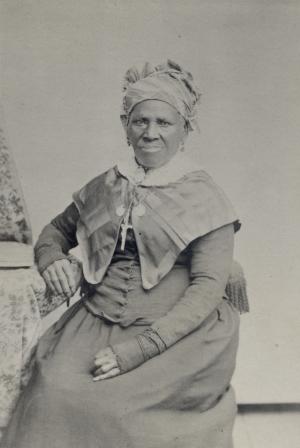
Likely born about 1812 in Kentucky, Eliza was said to be a gift to Philippine Duchesne from Bishop Dubourg around 1821 or 1822. Recent research indicates she may have been the daughter of an enslaved couple, Henry (Harry) and Jenny, also held by the bishop. She possibly had siblings, one of whom, Sarah, named her in a bank application in 1872. Sarah, living in New Orleans, indicated that her parents were Henry Nebit/Nobit and Jenny Burch and that she had a sister Eliza living in Saint James parish, where the school, Saint Michael, was located from 1825.
Eliza accompanied Eugénie Audé and companions to found the Academy of Saint Michael in what became known as Convent, Louisiana. Eliza became close to the Society, and her dream was to become a member. However, segregation laws in the South meant that she would never be able to join.
She married at least twice. In the 1870 census, she had five children with her, one of whom is also with her in 1880 as her nephew. Society records mention that one marriage was unhappy, and the spouse disappeared with Eliza’s property. Neither marriage appears in church records, which are sparse for the dates covered.
Liza’s strong personality comes out in three extant letters and in stories about her in the annual newsletters of the Society, which mention her three times. She was determined to be buried with the RSCJ, even if she could not join them in life. This request was granted by the superior general.
At the end of her life, she dedicated herself each Pentecost Sunday by a vow of charity as a Sister of Charity of the Sacred Heart. The public ceremony, with the vow made to serve the sick and needy, took place in front of the assembled community and concluded with the singing of the Magnificat.
When Eliza died in 1889, she was mourned by both RSCJ and the black population of Convent. The account of her last hours and her burial merited a long mention in the Annual Letters of the convent of Saint Michael that year.
